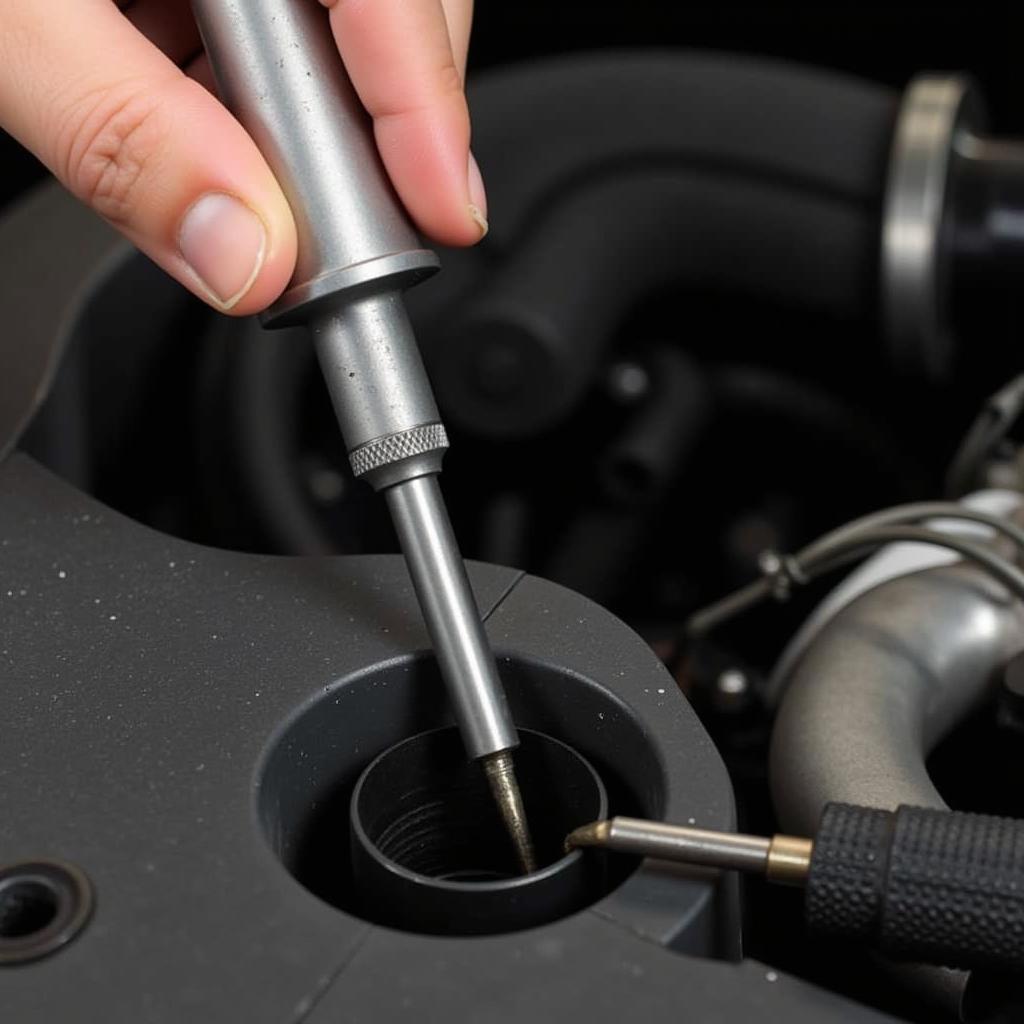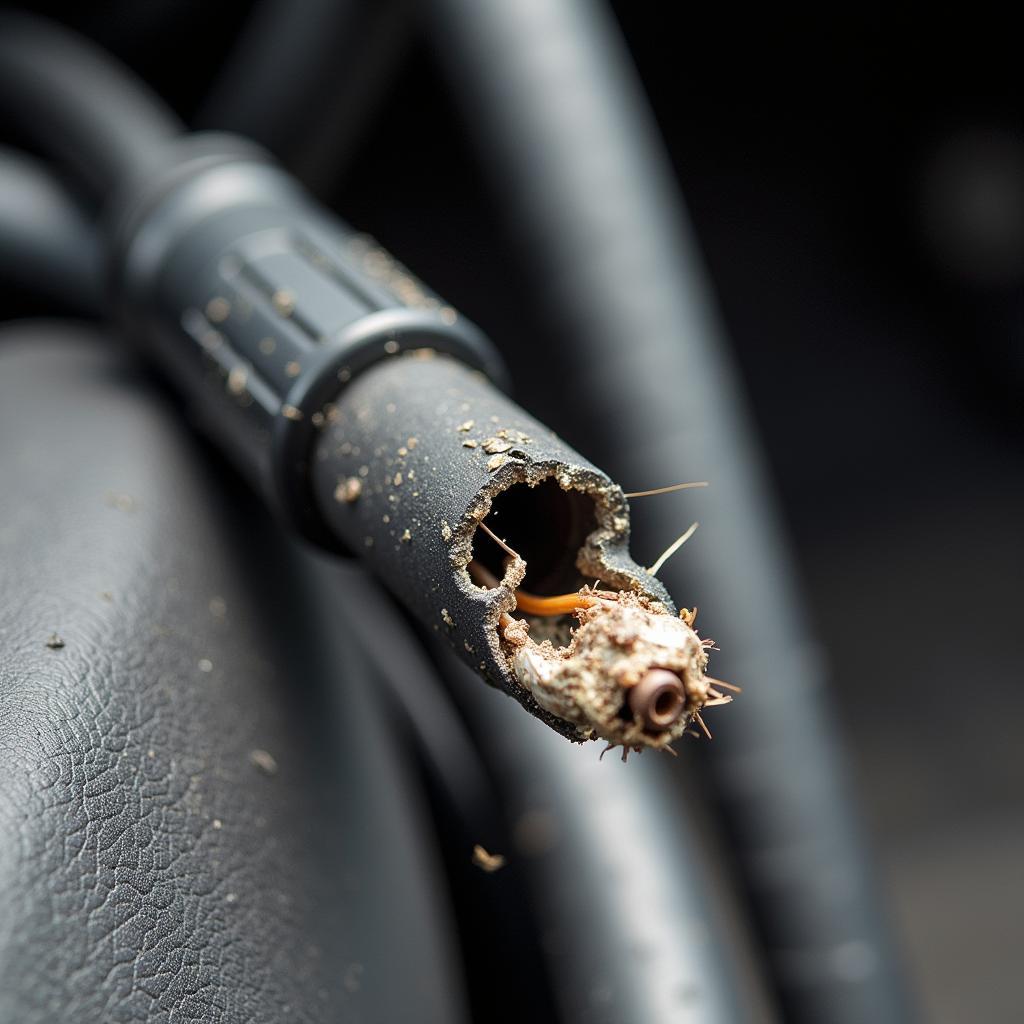An extractor tool is an essential piece of equipment for any car owner, mechanic, or automotive enthusiast looking to fix a car. Whether you’re dealing with a stripped screw, a broken bolt, or a seized nut, having the right extractor tool can save you time, money, and frustration. This guide will cover everything you need to know about extractor tools, from choosing the right type to using them effectively.
Types of Extractor Tools for Fixing a Car
There are several types of extractor tools available, each designed for specific situations. Understanding these differences is crucial for selecting the right tool for the job and fixing your car effectively.
Screw Extractors
Screw extractors are designed to remove stripped screws. They typically feature a tapered, fluted tip that bites into the damaged screw head, allowing you to turn it out. These are invaluable for fixing a car with stripped screws in tight spaces.
Bolt Extractors
Bolt extractors function similarly to screw extractors, but they are designed for larger fasteners like bolts. They often come in sets with various sizes to accommodate different bolt diameters. This makes them highly versatile when fixing a car with various bolt sizes.
Spiral Extractors
Spiral extractors, also known as easy-outs, have a spiral-shaped cutting edge that digs into the damaged fastener as you turn it counterclockwise. These are particularly useful for removing broken bolts or studs.
Impact Grade Extractor Sets
Impact grade extractor sets are designed for heavy-duty applications and can withstand the high torque of impact wrenches. These are essential for professionals fixing a car with extremely stubborn fasteners.
 Screw Extractor Set for Car Repair
Screw Extractor Set for Car Repair
Choosing the Right Extractor Tool for Fix a Car
Choosing the right extractor tool is essential for a successful repair. Consider the following factors when selecting an extractor tool for fixing a car:
- Size of the fastener: Choose an extractor that matches the size of the damaged fastener. Using the wrong size can further damage the fastener or the surrounding material.
- Type of fastener: Different extractors are designed for different types of fasteners. Make sure you choose the appropriate extractor for screws, bolts, or studs.
- Material of the fastener: Some extractors are better suited for certain materials. For example, cobalt extractors are ideal for hardened steel fasteners.
- Accessibility: Consider the location of the damaged fastener and choose an extractor that can reach it easily.
How to Use an Extractor Tool Effectively to Fix a Car
Using an extractor tool correctly is crucial for preventing further damage. Here’s a step-by-step guide:
- Clean the area: Remove any debris or rust from around the damaged fastener.
- Center punch the fastener: Use a center punch to create a starting point for the drill bit.
- Drill a pilot hole: Drill a pilot hole into the damaged fastener using a drill bit slightly smaller than the extractor.
- Insert the extractor: Insert the extractor into the pilot hole and tap it lightly with a hammer to ensure a secure fit.
- Turn the extractor counterclockwise: Use a tap wrench or a drill in reverse to slowly turn the extractor counterclockwise.
- Remove the fastener: Once the extractor has gripped the fastener, continue turning it until the fastener is completely removed.
 Using a Bolt Extractor on a Car Engine
Using a Bolt Extractor on a Car Engine
Common Mistakes to Avoid When Using Extractor Tools
- Using the wrong size extractor: This can damage the fastener or the surrounding material.
- Drilling too large of a pilot hole: This can weaken the extractor and make it more likely to break.
- Applying too much force: This can also break the extractor or damage the surrounding material.
“Always use the correct size extractor and apply slow, steady pressure,” advises John Smith, Senior Automotive Technician at Smith Automotive. “Patience is key when working with extractor tools.”
Conclusion
An extractor tool for fixing a car is an invaluable tool for any car owner, mechanic, or DIY enthusiast. By understanding the different types of extractors, choosing the right tool for the job, and using it correctly, you can save yourself time, money, and frustration. Remember, using the correct extractor tool for the specific job is crucial for success. Need further assistance with your car repair? Contact AutoTipPro at +1 (641) 206-8880 or visit our office at 500 N St Mary’s St, San Antonio, TX 78205, United States. We’re here to help you get back on the road!







Leave a Reply